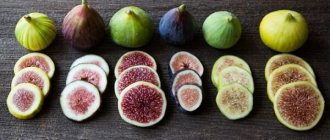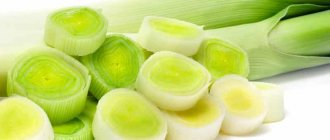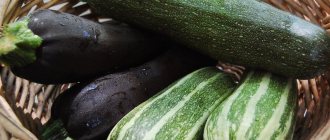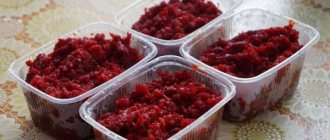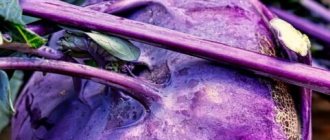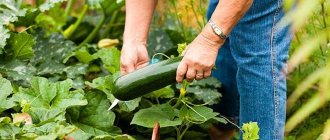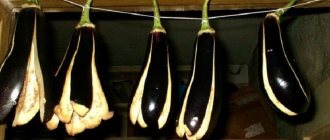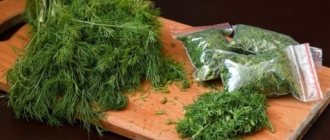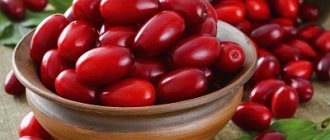Onions are a traditional vegetable, without which it is impossible to imagine preparing many dishes. Leeks are found in Russian kitchens less often than regular onions. But recently, this useful product has gained great popularity.
Leeks are used fresh, salted, pickled, dried, or frozen. It can be used separately or as an ingredient in dishes. In a number of countries (Ancient Egypt, Greece, Mesopotamia) the plant has been known for a long time, since ancient times. Leeks came to Europe in the Middle Ages thanks to the Romans.
Leeks are also called pearl leeks because of the white-silver hue of the underground part.
Chemical composition
The composition of green and onions includes:
- B vitamins, vitamin A, C (in larger quantities in feathers);
- Mineral salts (potassium, magnesium, fluorine, iron, cobalt, manganese, zinc, sulfur);
- Sugars (glucose, sucrose, maltose, fructose);
- Essential oils;
- Carotene;
- Acids (phytic, malic, citric);
Leeks contain:
- Ascorbic acid;
- Mineral salts (calcium, magnesium, potassium, iron, sulfur, phosphorus);
- Sugar;
- Essential oils;
- Carotene;
- Protein substances.
REFERENCE: To prevent the vegetable from losing color when dried, it is recommended to soak it in a salty solution (50 grams of salt per 1 liter of cold water).
Benefits and harms
Both green and onions, as well as leeks, have beneficial properties for the human body.
Useful properties include:
- They have an antimicrobial effect;
- Prevention of colds (green onions);
- Stimulate etching processes;
- Normalize the functioning of the gastrointestinal tract;
- Affect sperm activity and testosterone production;
- Strengthens hair, nails and teeth;
- Improves memory;
- Strengthens the nervous system;
- Increase immunity;
- Prevents the formation of tumors;
- Promotes hematopoiesis;
- Activate growth processes (in children);
- Cleanses the skin.
Onions have practically no harmful properties.
ATTENTION: It is not recommended to consume this vegetable raw in large quantities for people who suffer from liver, kidney and intestinal diseases.
Also, due to the sulfur content, onions cause bad breath.
How to use a vegetable correctly
Having bought leeks for the first time, what part is eaten, the housewife immediately begins to search on the Internet. For many, this vegetable remains a mystery. Some people try the green part out of habit. Disappointed in the taste, they no longer want to see these greens on their table. In fact, the leaves are consumed extremely rarely due to their increased rigidity. Moreover, only young people are suitable. There is no need to throw away the green part. More about her a little later.
It is the white leg that grows underground that has a delicate structure. It has a pleasant taste, different from onions. The stem contains no bitterness. Its value is due to its bright aroma. Leek can add a new unusual flavor to any dish. It will become piquant, unlike what you are always used to.
The white leg is eaten raw, boiled, and fried. It is added to salads and used as an ingredient in sauces and appetizers. Why it is better to wash the stem cut lengthwise is explained by its structure. The leg consists of separate layers. Particles of earth and sand may remain under each of them. The cut stem is better washed away from dirt.
What to do with the green part
Hard tops are usually thrown away, but in vain. Only a real housewife would be interested in the question of how to use the green part of a leek, because they also paid money for it. This part of the vegetable is also used in cooking, but is not eaten. The green stem is included in a bouquet garni. It is a bunch of different herbs that are dried.
The bouquet is tied with a rope and hung from the ceiling of a dry room. When preparing a hot dish, a bunch of greens is dipped into boiling water. The aroma boils out of it. The herbs themselves, after boiling, become unsuitable for further use. The bouquet is removed from the boiling water and thrown away.
Peculiarities
Green onions can be prepared not only by drying. These are the following methods:
- Freezing;
- Salting;
- In oil.
ATTENTION: To keep onions as long as possible, you need to select only healthy, dry onions. Onions should be stored in boxes or baskets in a dry and cool place.
Freeze finely chopped green onions in food bags.
To salt 1 kg of chopped feathers, take 1 tbsp. salt, mix everything thoroughly and place in a glass jar under a nylon lid. This type of preparation is ready for use after three weeks and can be stored in the refrigerator all winter.
An interesting way to prepare green onions is to add oil. Finely chopped green onions - put in a glass jar and pour in vegetable oil so that it completely covers the onion. If desired, you can add finely chopped basil, dill, parsley or other herbs.
Harvesting onions does not require many methods. There is no point in freezing the vegetable, since it is perfectly stored fresh until the next harvest.
Leeks can be frozen and kept fresh for up to 4-5 months.
What is leek
The green vegetable is widespread in Asia and the eastern Mediterranean. Here in its homeland it grows wild. In Russia, people began to learn about onions from the end of the 20th century. The crop is still not in demand by gardeners today. Onions rarely appear in vegetable markets. This is due to the difficulty of growing. The crop has a growing season of up to 200 days.
Residents of cold regions can only grow onions from seedlings. However, vegetable growers do not want to go through such difficulties. Using seeds simplifies the procedure. However, sowing in open ground can only be done in the south. Vegetable growers in Kuban have the opportunity to get a harvest inside a greenhouse, but they are also not eager to take up valuable space. They prefer to plant the beds with more popular vegetables, for example, tomatoes or cucumbers.
There is only one option left - buy a green vegetable by visiting a supermarket. To recognize a leek, you need to know its appearance. Externally, the culture is similar to a classic onion, but it does not have the usual head. The entire plant consists of a thick stem.
Important! The stalk of a leek is called the stalk.
The stem of an onion consists of two parts: aboveground and underground. The aboveground part is bright green. The stem gradually turns into flat feathers that can grow to a height of 1.5 m. The underground leg ends with a root. The stem color is white with a silver tint.
How to dry onions: green, onions and leeks
REFERENCE: When dried, onions retain all their taste and nutrients.
Drying is one of the best methods, as it does not require much time and effort.
Let's look at the basic rules for drying onions using an oven and an electric dryer.
In the oven
Green onions
Drying:
- We select the green feathers of the onion, cutting off the yellowed tips and clearing the dry lower feathers;
- Feathers should be rinsed under cold running water, allowed to drain and dried a little;
- Cut the dried onion into 5-7 mm lengths;
- Place the evenly chopped feathers on a baking sheet and place in the oven;
- Select a temperature of 40-50 °C and dry for 2-3 hours
- Open the oven and take it out after it has cooled completely.
How to dry:
Onion
Drying:
- Peel the required amount of onion, rinse under running water, and let the onions dry;
- Remove the core and tail and cut in the desired way;
- Spread the chopped onions evenly on a baking sheet and place in the oven;
- Dry at 70 °C for about 8 hours, turning occasionally.
How to dry onions in the oven:
If you want the onion to dry faster, you need to immerse it in boiling water for 1-2 minutes. After this, we dry the vegetable at a temperature of 70 °C for 2 hours, then lower the temperature to 40 °C and dry for another 1 hour.
Leek
Drying this type of onion is similar to other methods.
Preparation steps:
- Cut off the roots of the leek, separate the green feathers and remove the top layer of peel;
- Immerse the white part of the vegetable (7-8 cm) in boiling water for 1-2 minutes;
- We take out the vegetable and immediately cool it in ice water, let it drain and dry a little;
- Cut the leeks into small pieces and spread them evenly on a baking sheet and put them in the oven;
- Dry the vegetable at a temperature of 40-50 °C for 3-4 hours.
Video tutorial:
Electric dryer
Green onions
Drying with an electric dryer is practically no different from drying in an oven. Place the chopped onion on the appliance racks and dry at a temperature of 70 °C for 30 minutes.
Video:
Onion
For drying onions in an electric dryer, the same tips apply as for drying them in the oven. Dry the chopped vegetable at a temperature of 60 °C for about 12 hours.
Dried onion seasoning alternative:
Leek
Drying leeks in electric dryers differs only in the choice of temperature of the device. Dry the vegetable at a temperature of 65-70°C for 2-3 hours.
Drying leeks – 7 kg:
How to properly dig up leeks
For the purpose of seasonal use, selective harvesting of unripe crops is allowed, which is carried out starting from the end of August. During this period, the leek leg is slightly watery, but is suitable for preparing salads, fried and baked dishes. Vegetables are removed from the garden evenly to stimulate the growth of the remaining plants, give them more space, and improve lighting.
Leeks intended for storage are dug out in one go to ensure uniform drying of the vegetable. Watering the crop is stopped 10-14 days before the expected harvest day. The harvest is harvested in sunny, dry weather; if it rains, it is recommended to wait a little before harvesting.
The event is held in the morning to allow the vegetable to dry in the fresh air. A day before harvesting, the soil is raked away from the bushes, exposing the upper part of the head. It dries slightly and becomes covered with a thin protective layer.
It is recommended to use a pitchfork to dig up leeks. A garden tool is stuck into the ground at a distance of 10 cm from the plant and the root crop is carefully lifted, lifting it above the soil surface. Then the vegetable is carefully removed from the ground.
Leeks should not be pulled out by hand while holding onto the tops. By doing this, it is easy to damage the integrity of the bulbs. To remove stuck soil, do not hit the heads against the ground or each other. Remove soil from the bulb and stem with hands wearing cotton gloves. If it is not possible to completely clean the leg, the remaining soil can be easily shaken off after the vegetable has dried.
Green feathers are not immediately trimmed - some of the nutrients from the tops pass into the stem during drying. In good weather, leeks are left to air in the beds. Vegetables are laid in one layer, having previously spread agrofibre or dense fabric on the ground. If it is going to rain, the root crops are moved under a canopy.
Which one stores better?
Storing onions dry does not require much effort. In this form, any type of vegetable can be stored for up to two years, provided it is stored correctly.
Spicy varieties:
- Golden;
- Timiryazevsky;
- Strigunovsky;
- Danilovsky;
- Rostov Bulb;
- Krasnodar;
- Spanish;
- Kaba.
ATTENTION: When preparing onions for drying, you should pay attention to the type of onion. Bitter varieties of onions are more shelf-stable than sweet onions and can be stored much longer.
Sweet varieties:
- Globo;
- Crimson Ball;
- Exhibition;
- Greatorul;
- Retro;
- Aleko;
- Yalta Red;
- Black Prince.
How to store
IMPORTANT: All containers for storing vegetables must have holes for air circulation. Place dry onions in small portions. Check and revise the product periodically.
After drying, onions of all varieties can be stored in:
- Plastic containers;
- Glass containers;
- Food bags;
- Fabric bags.
It is recommended to store the finished product in a cool, dry place without direct sunlight. A pantry or kitchen drawers away from the gas stove are best. You can also store it in the basement, but provided that the onions are not exposed to moisture.


